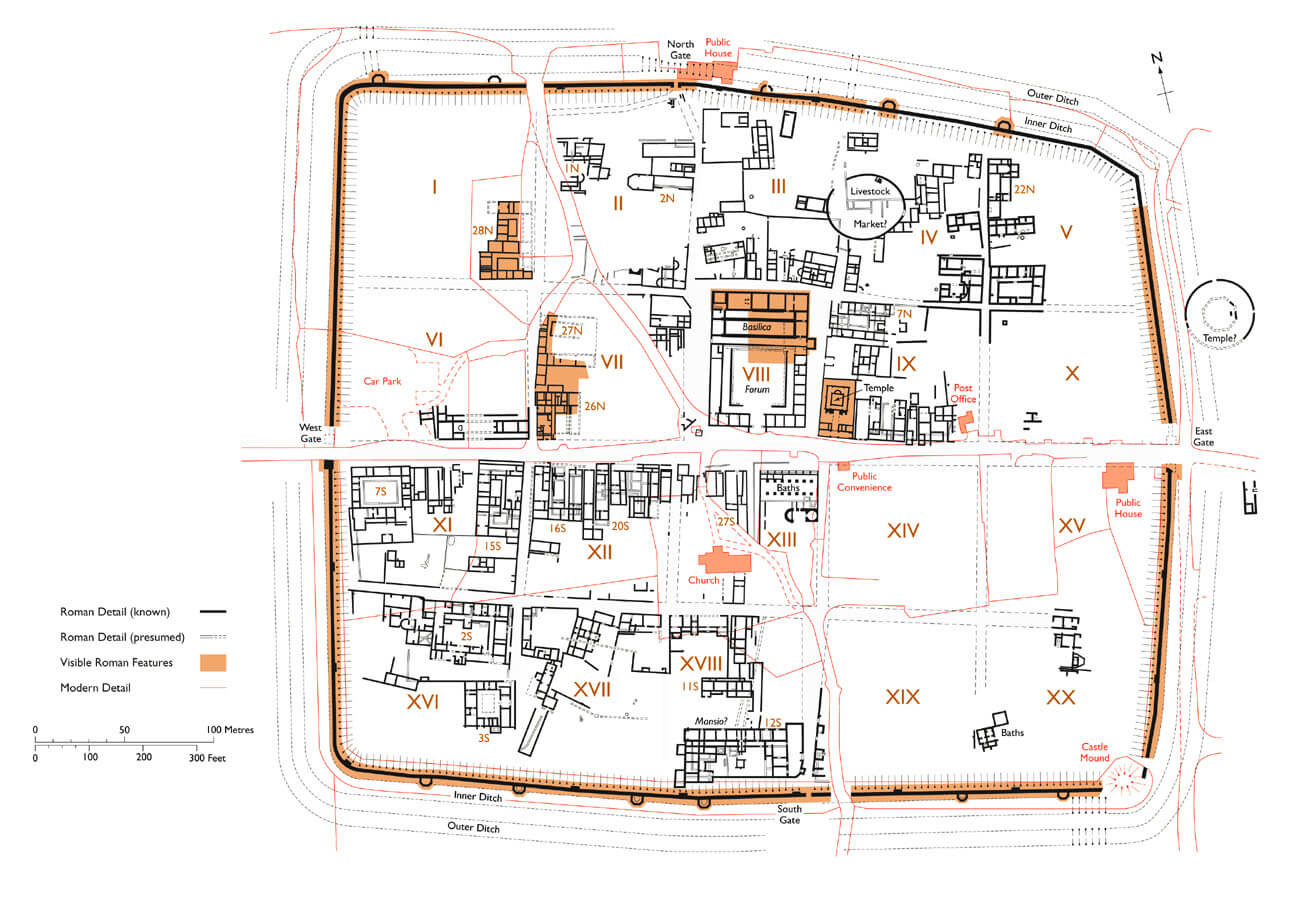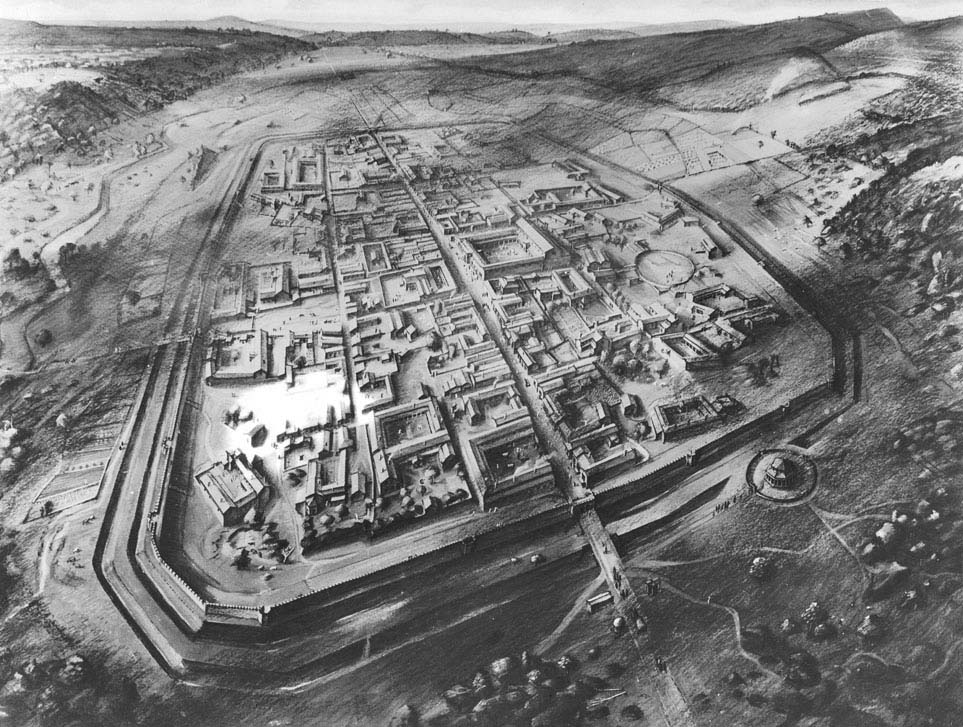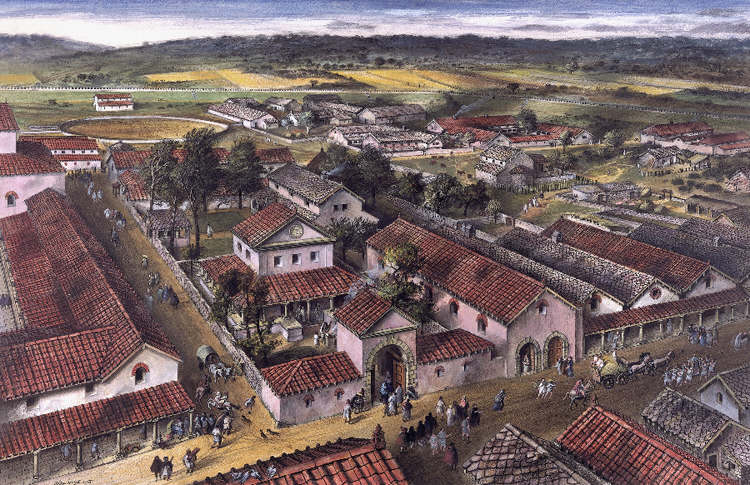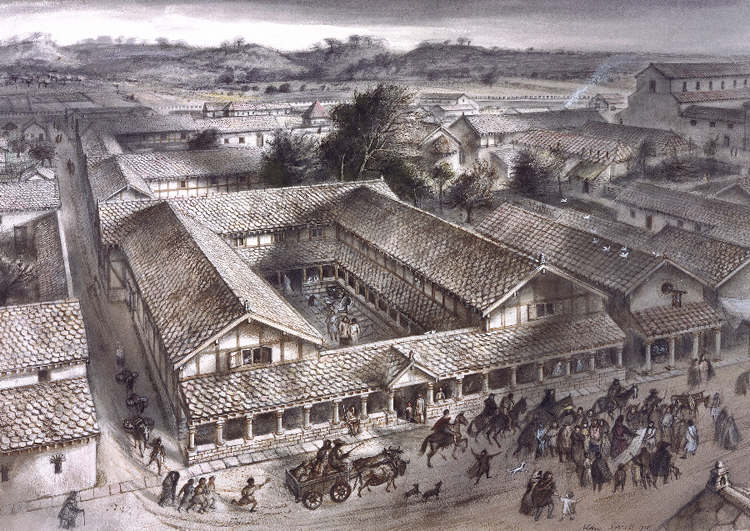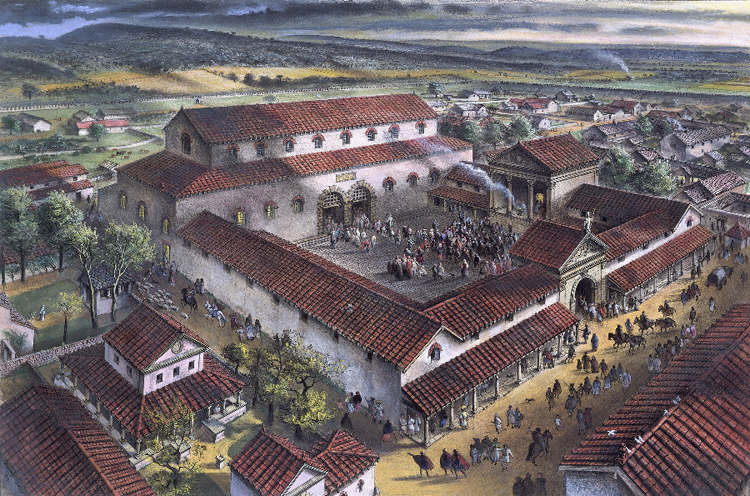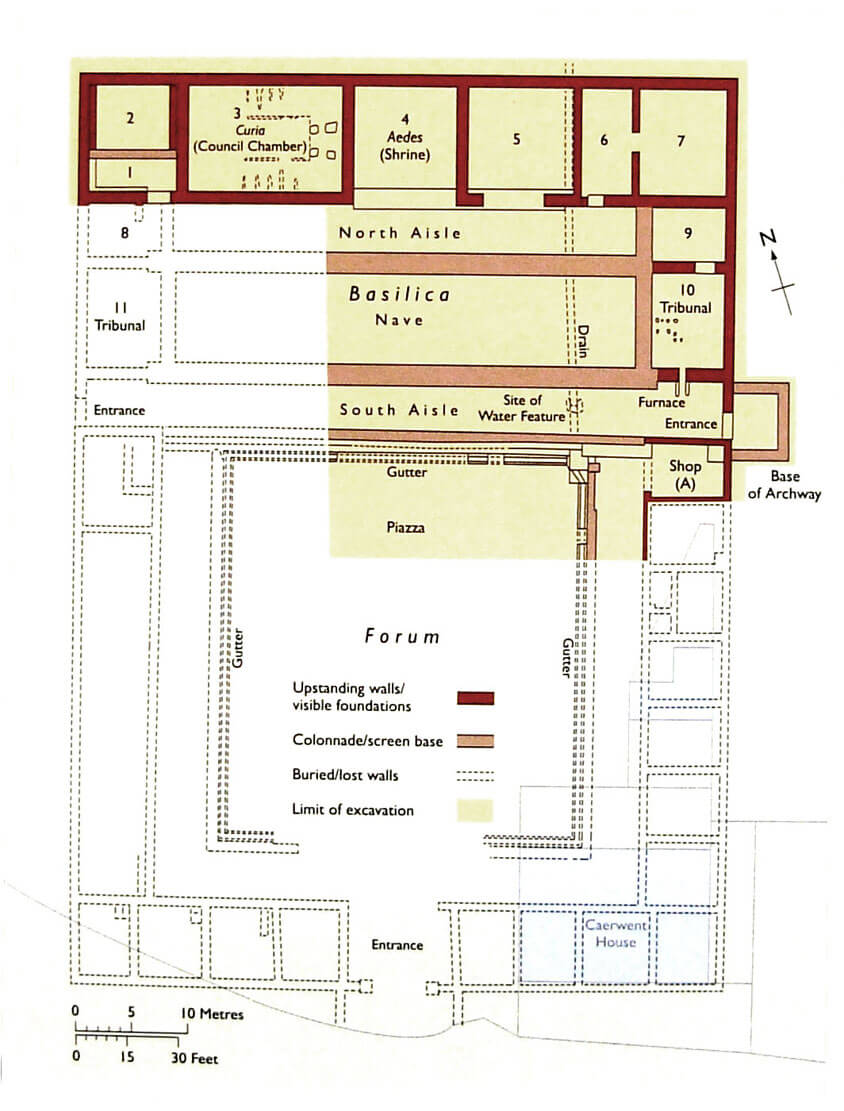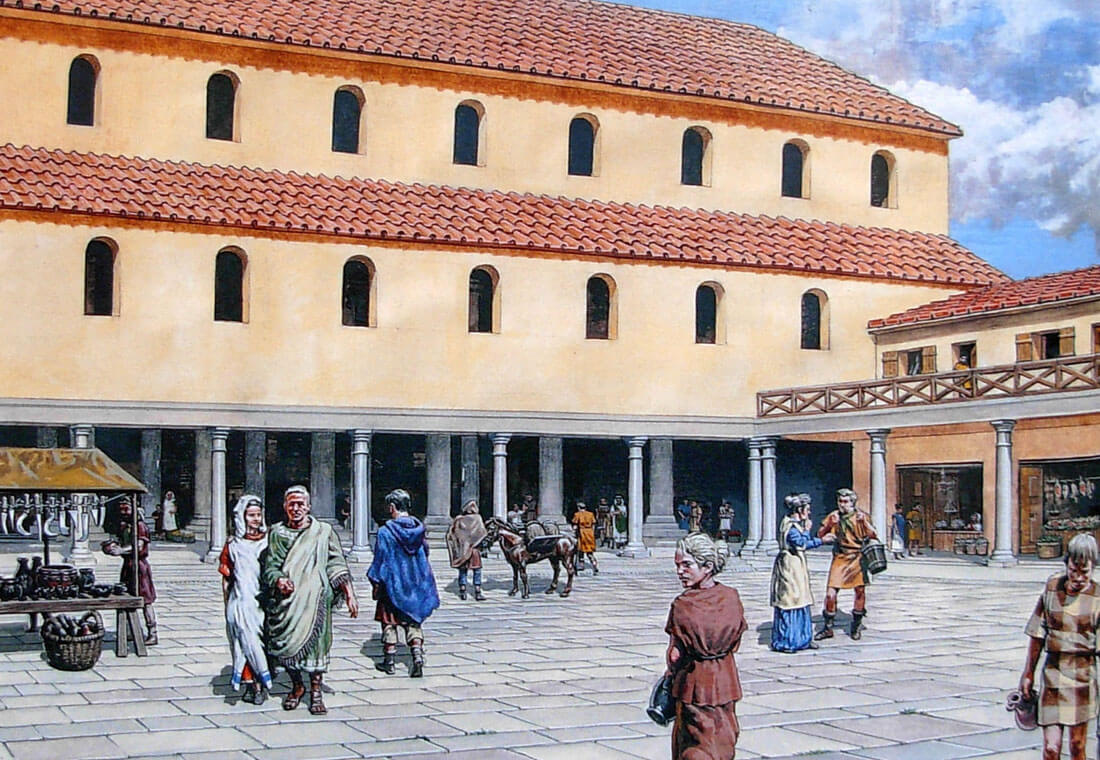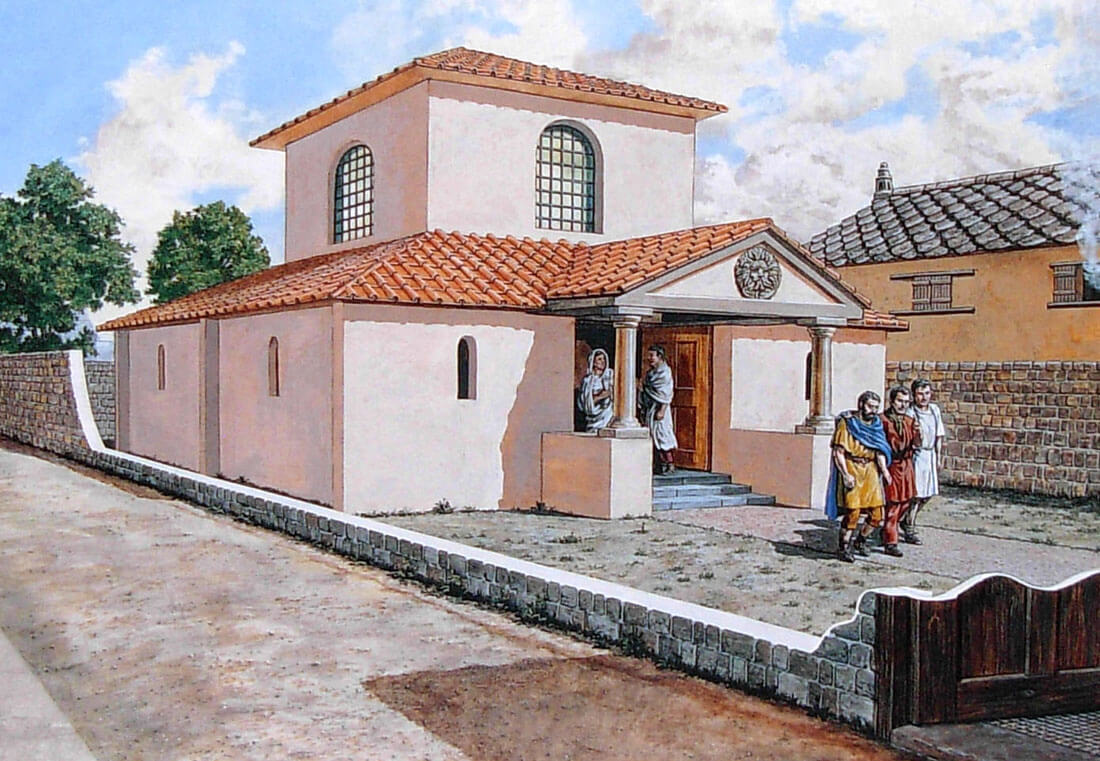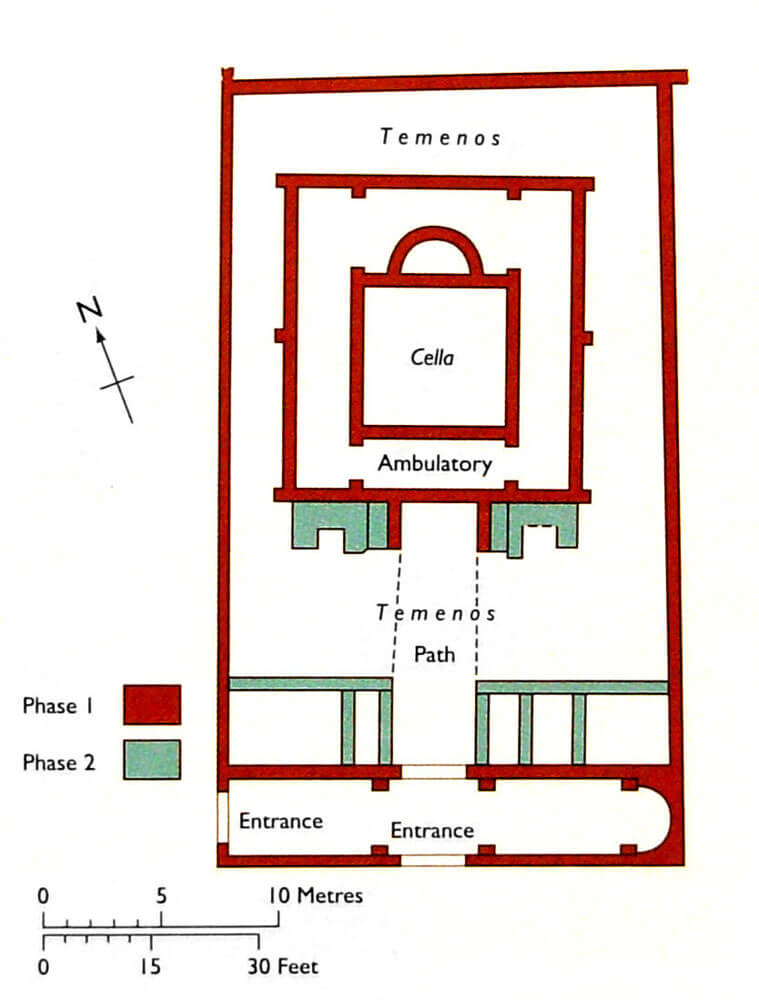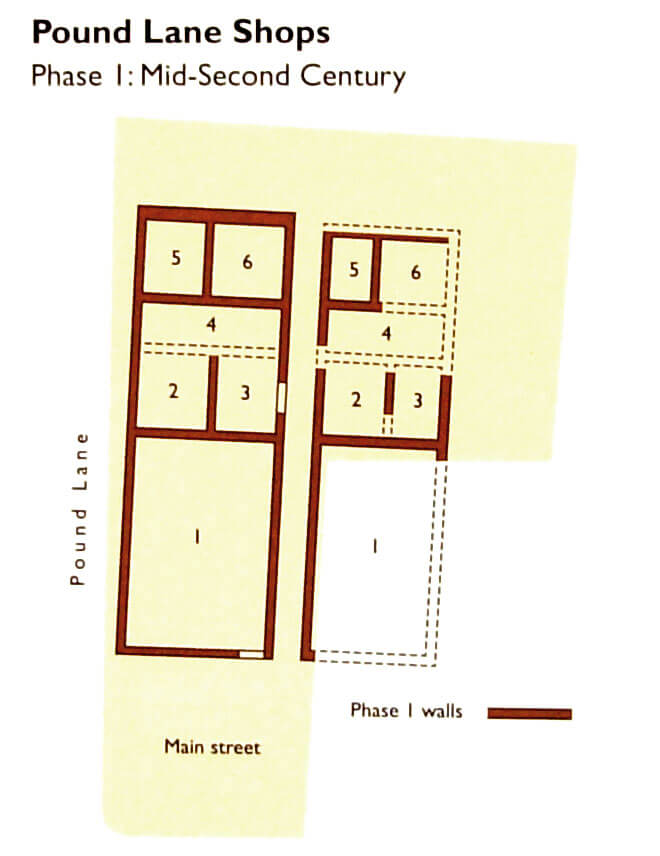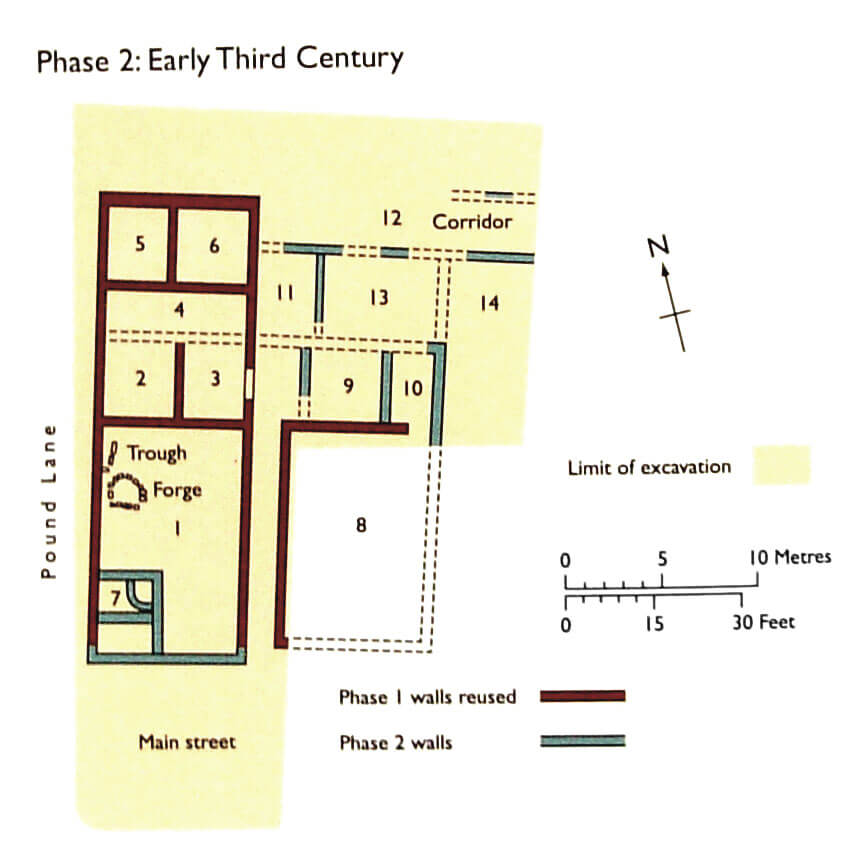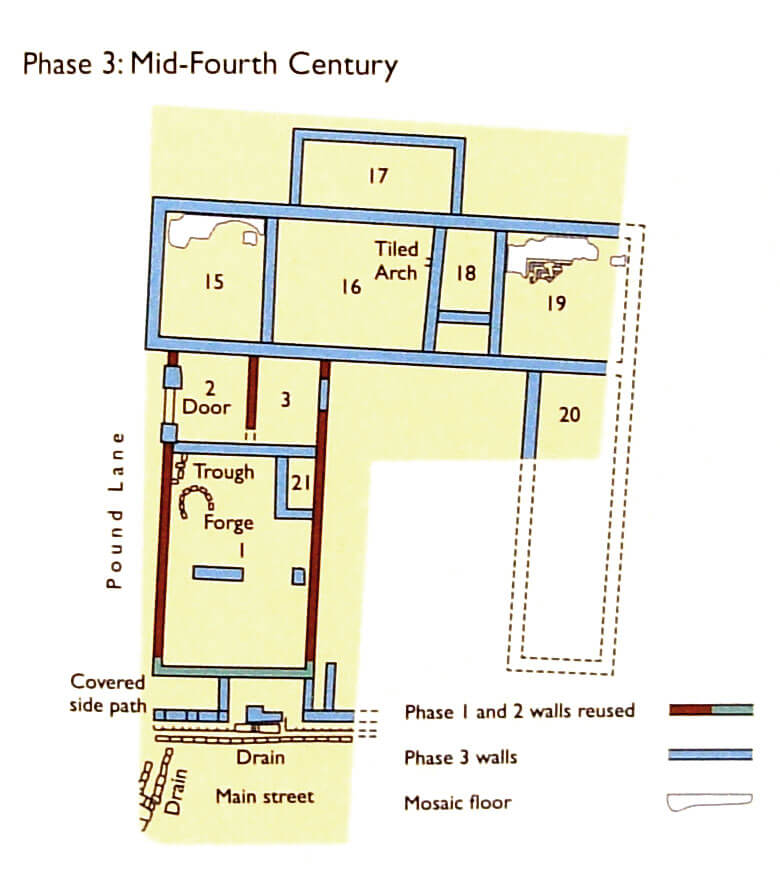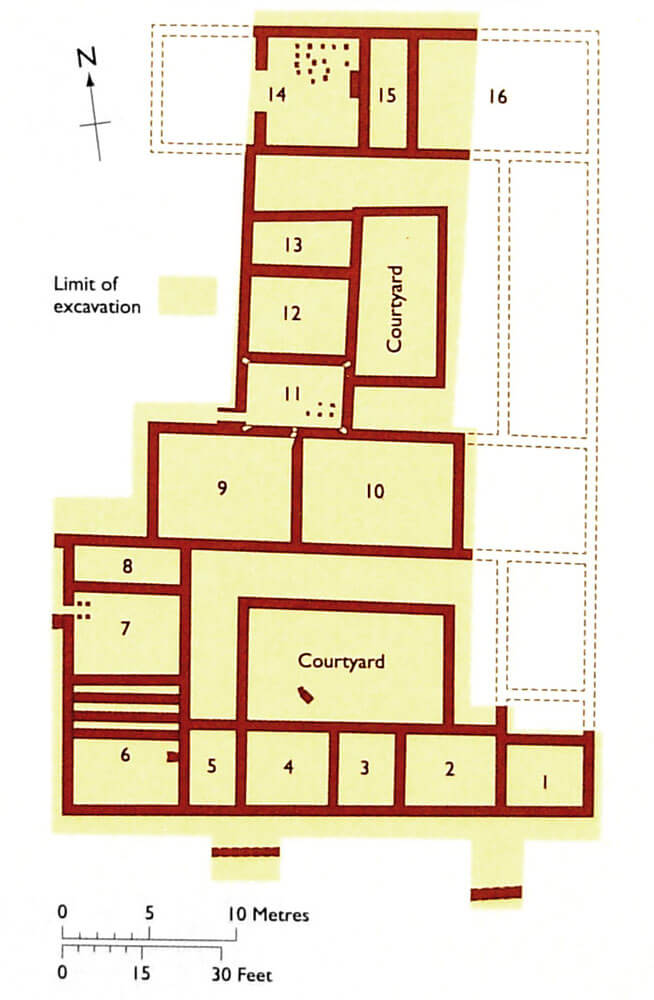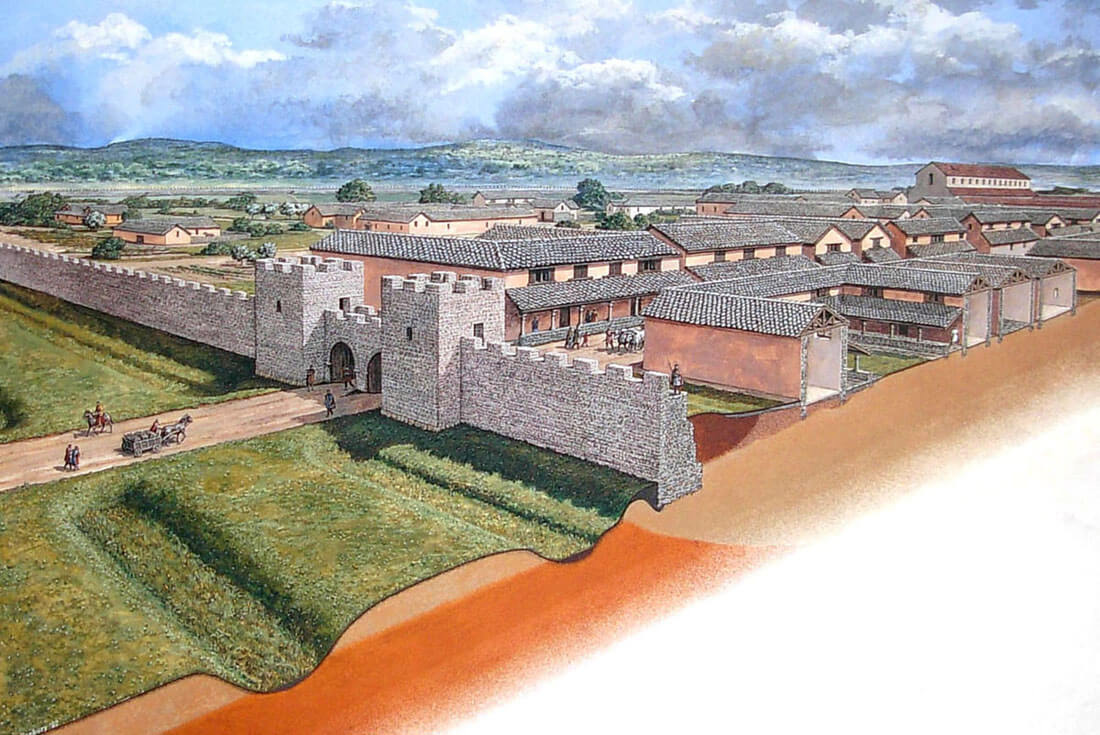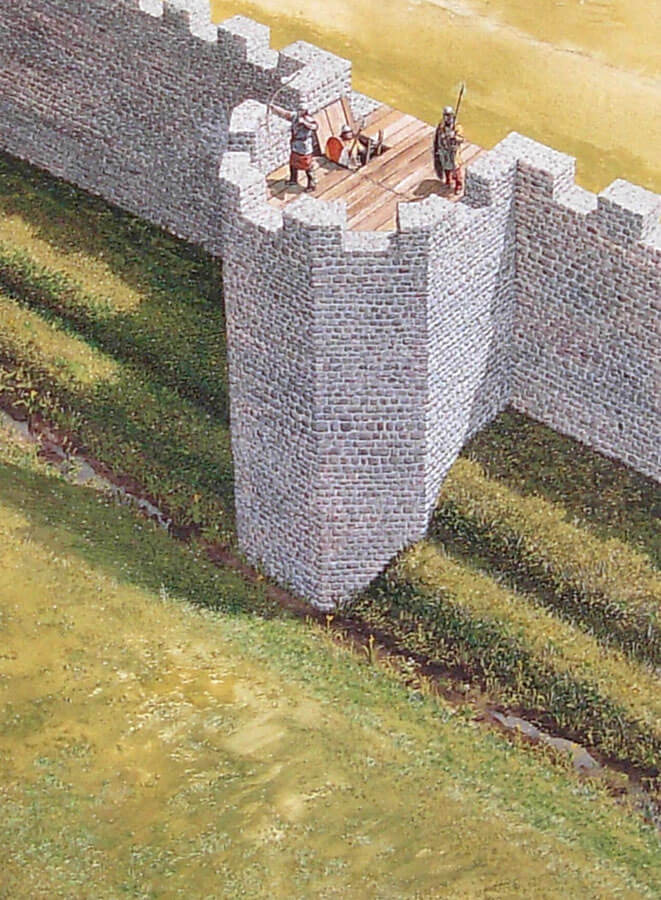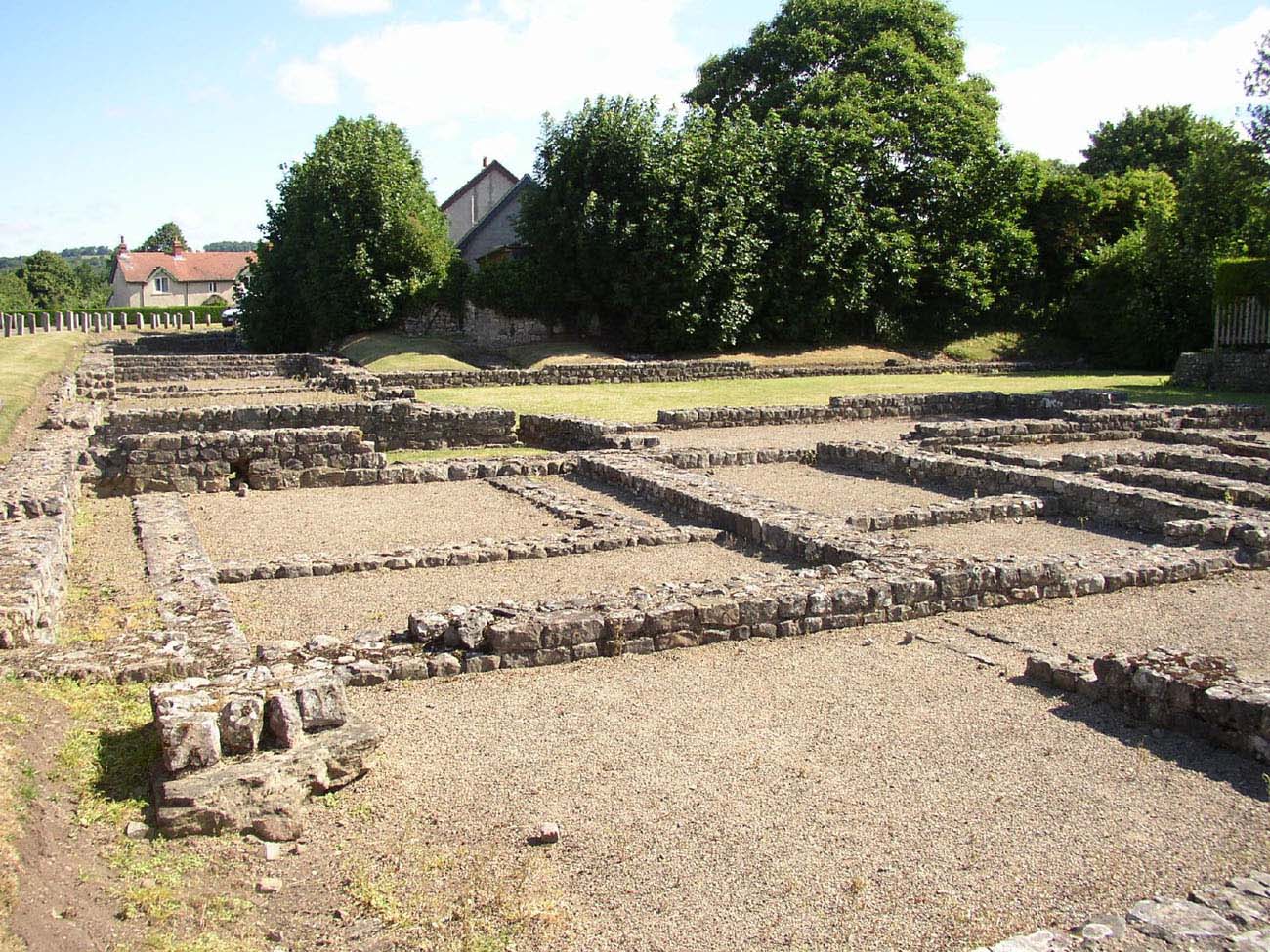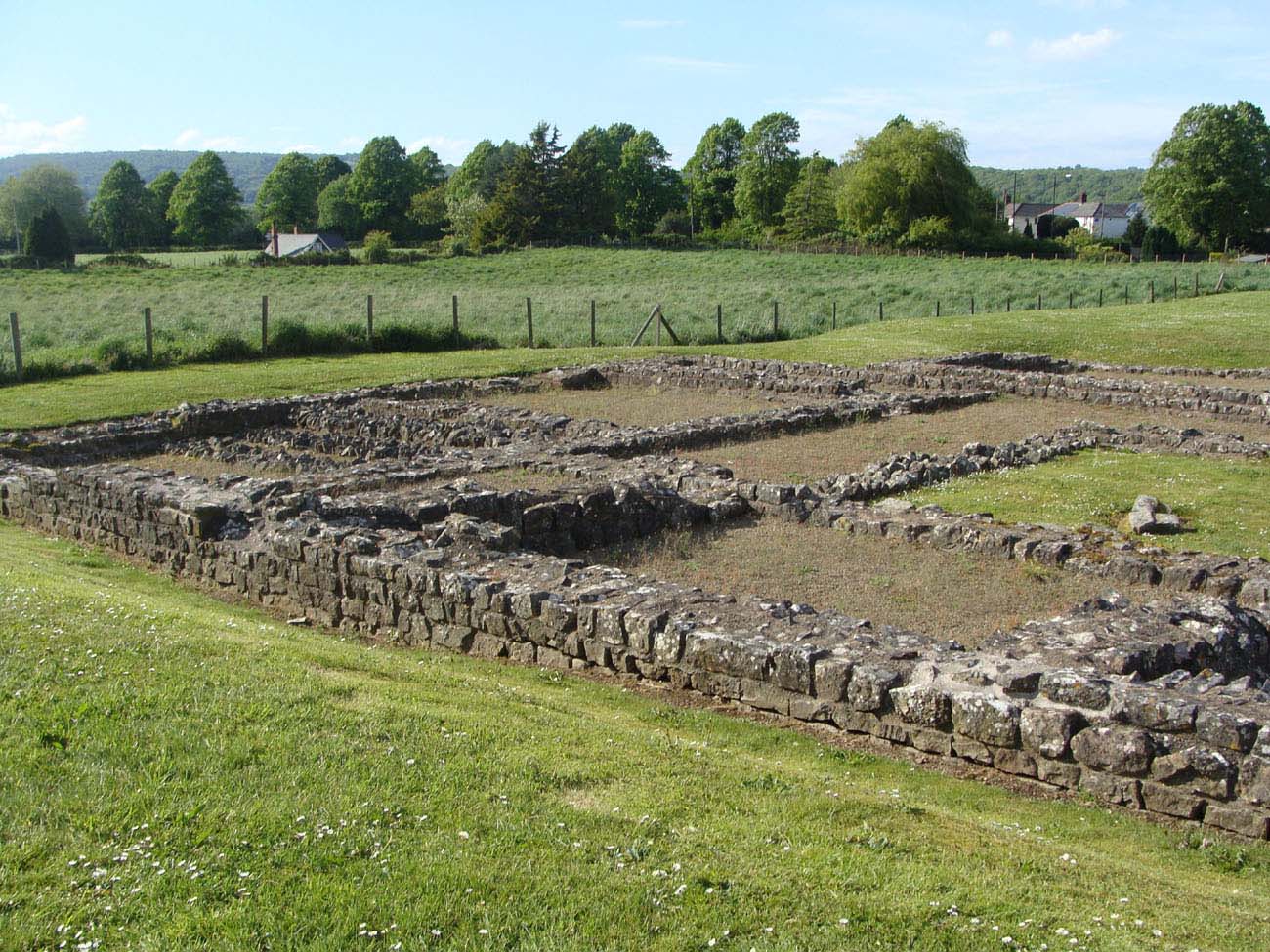History
Caerwent, or the Roman Venta Silurium, was founded in 75 AD in the lands of the Celtic tribe of Silures, conquered by Julius Frontinus. Its Latin name meant “the market settlement of the Silures“. The town, which was on the Roman road between Isca Augusta (Caerleon) and Glevum (Gloucester), was in contrast to nearby Isca, essentially founded for civilian administration, not for military purposes.
The process of romanization of Silures proceeded quickly. Initially, they were only dediticii, that is citizens without status and political rights, but Caerwent soon became a self-governing town, as evidenced by the construction of the forum and the basilica in the first half of the first century AD. As a civitas, Venta Silurium became a tribal gathering place where courts were held and administrative activities were carried out. Military supervision over Silures was also reduced quickly, especially after 122, when a large part of the resources and troops were moved to the northern border in connection with the construction of Hadrian’s Wall.
At the end of the second century, the town was full of life, it was probably about 2000 – 3800 inhabitants, and by that time it was strengthened by the first fortifications. In the 3rd century, the threat posed by Irish pirates grew, and the military restructuring led to the withdrawal of the 2nd Augustus Legion from its base in nearby Caerleon. These events initiated the further expansion of the town’s fortifications. Even in the first half of the 4th century, the town was experiencing a period of prosperity, judging by the number of new buildings built then and their lavish decoration, however at the end of the fourth century, Roman armies withdrew from Britain to fight in other parts of the empire. Probably than Caerwent began to decline, although it was still inhabited. Little is known about the settlement in the next hundred years, but at the beginning of the sixth century it became the capital of the Gwent kingdom. It is from this period that the modern name of the city comes from, Caerwent translates as “Gwent stronghold”.
After the invasion of the Normans into England in 1066, a period of invasions to Wales began, both by the king himself and by the marcher lords. The main Norman fortresses at that time were in Chepstow and Cardiff, but Caerwent was important because of its location on the road between them. To ensure control over the road, a small motte-and-bailey castle was built in the south-east corner of the Roman fortifications. This fortification, which was never more than a small watchtower, probably only functioned for a short time. When Chepstow became the dominant port in the region, Caerwent transformed into a small settlement, in which most of the former Roman city served as a pasture.
Architecture
Archaeological excavations suggest that initially Caerwent was a small settlement with a dozen or so wooden houses scattered along the road from Gloucester to Cardiff. In its final Roman form it was a large urban organism of 17.5 ha (although on the scale of Roman cities in Britain one of the smaller ones), on a rectangular plan, with a regular street layout that enabled the division of the town into rectangular plots (insulae). The roads were made of compacted gravel, and their side edges were moulded to ensure rainwater drainage.
In terms of buildings, Caerwent was essentially a miniature version of Rome. In its central place was the forum and the basilica. The forum was an open market surrounded by porticoes with rows of columns that supported the roof shading shops, offices and taverns, while the cobbled central surface provided space for stalls. In the ground floor each shop consisted of a single room with a large open front, probably closed with timber shutters. In particular, they filled the east and south wing on both sides of the gate, while the west wing housed one long hall with a small room for officials at the northern end. The entrance to the forum, as mentioned, led from the south, from the main street, through the arcaded gateway. The basilica occupied the north side of the forum. It was a large, three-aisle building 80×55 meters and a probable height of 20 meters, in which courts, municipal events and ceremonies took place. At its ends were smaller rooms for officials listening to the affairs of residents, and towards the forum was a portico, supported by a row of Corinthian columns over 9 meters high. In the northern part of the basilica, a row of administrative rooms was separated, the largest of which served as a curia, or council chamber.
Not far from the forum, on the eastern side, there was a Romano-Celtic temple complex. It was built quite late, around 330, on the site of an earlier Celtic temple. It is not known what deities were worshiped in it, it could have been Roman Mars or Celtic Ocelus, it is also possible that it was already used by Christians. The temple was built on a square plan, with an internal sanctuary (cell) with a tower-like structure and an apse rear niche in which sculptures and other objects of worship were located. The temple was entered after a long path leading out onto the street, preceded by a porch in the form of an oblong building. From outside, two entrances led to it, and inside in the eastern part was a small room with an apse end, perhaps another, smaller temple. The main sanctuary was surrounded by an ambulatory, perhaps intended for solemn processions and a sacred courtyard (temnos). Later, five rooms of unknown purpose were erected on the inside of the porch at the courtyard, and two vaulted niches, probably containing statues, were added to the ambulatory wall.
At the beginning of the second century, public baths, shops and craft workshops were built, including a blacksmith’s forge. Shop buildings were located especially on the main street running through the center of the town from east to west. It combined a commercial function (the front part from the street side, closed with timber shutters) with a residential (back and floor of the building) and utility (back of the house), in which workshops were organized. Most individual shops occupied a single plot, separated by narrow passages. They provided access to the rear of the buildings, but moreover, they provided space for the gutter to which water flowed from the roofs. In one case, two connected shops were also found, sharing a common portico (XI, 15S), probably owned by one man. The baths were located on plot No. XIII, at the main road, just opposite the forum.
The houses had the form of farms with small plots of land, but also developed, rich residences. The simplest were four-sided building blocks divided into a series of rooms accessible from corridors running along one or two edges. These passages ensured the privacy of the rooms, which would otherwise have to be directly connected to each other. The more developed houses consisted of two or more building blocks surrounding the inner courtyard, which could serve as a garden. Their layout could be spread, because beside the center, town provided enough free space for expansion. Rarely did a residential buildings had an upper floor, and only one basement was discovered. The windows were probably large to provide good interior lighting, some could be glazed, although Roman glass had a green – blue tint. Certainly they were secured with timber shutters or iron grilles. Inside the floor was compacted earth, perhaps sometimes the basis for wooden panels or tiles, but mosaics were often used in larger houses. Mostly they depicted geometric patterns, although there were also drawings of people or animals. Walls and ceilings were covered with plasters painted in bright and vivid colors. The popular way was to create colorful vertical stripes or bands. The main rooms in richer homes were heated with hypocaustum furnaces, others had to be equipped with portable braziers. Initially, the houses were erected in a half-timbered structure, i.e. with a wooden frame filled with wattle and daub, from the outside covered with plaster or whitewash to protect against moisture. Later, limestone and sandstone (Old Red Sandstone) were used on a larger scale.
Another important public building was a mansio, a kind of inn, where couriers and oficials could rent rooms and exchange horses. In Caerwent, a large building in the southern part of the town, next to one of the main entrance gates, is identified as mansio. It was a complex of rooms grouped from three sides around the courtyard, with the fourth side enclosed by a wall parallel to the town’s defensive wall. The large yard, where horses and carriages were probably unhitching, also stretched out in front of the building. Of the rooms, some were heated by hypocaustum furnaces (using hot air), a rich mosaic was also discovered in one, larger room on north-west side. The building in the corner of the courtyard housed latrines with drains on three sides and timber seats.
Caerleon was provided with sewage system, with clean water being brought in through the aqueduct from the hills to the north. In the town, it was distributed through a system of canals, most of which headed towards the forum, bathhouses and several larger houses. Waste water was used to flush latrines and several main channels. Most of the inhabitants used water for commercial use from the wells.
Only from the second century was the town was protected by a wood and earth fortification, rebuilt in the third century into stone defensive walls. The oldest ramparts were 9 meters wide and have survived to this day to a height of 1.8 meters. The earth for their construction was obtained from a V-cut ditch, which was located just in front of the rampart’s front. At its top there was probably a timber palisade with a separate wall-walk for defenders. The form of the oldest gates remains unknown, however, it is assumed that they housed in the same places as their stone successors, i.e. one on each side of the world, with the east and west gates being the exit of the main street in the middle of the fortifications, and the north and south ones were irregularly placed. This was probably due to the existence of a previously established road and building network.
Current state
Currently, Caerwent is one of the most famous archaeological sites in Wales, in which you can see, among others, the foundations of the Roman forum, basilica and a Romano-Celtic temple from the 3rd century. Relics of houses with preserved remains of the hypocaustum heating system are located in the northwestern part of the town, as well as the remains of shops and workshops located near the main street. Also worth seeing (described in a separate article) are the town fortifications. In the best condition they have survived in the southern and western parts of the former defensive circuit. In addition, in the porch of the medieval church of St. Tathan is an altar dedicated to Mars – Ocelus and a pillar with a Latin inscription of Paulinus, commander of the legion II Augustus from the time of Emperor Karakalla.
bibliography:
Brewer R., Caerwent Roman Town, Cardiff 2006.
Website castlesfortsbattles.co.uk, Caerwent roman town

